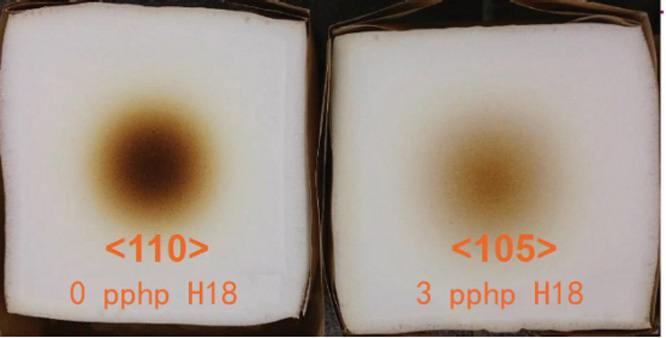polyurethane monosodium glutamate/self-skinning pinhole elimination agent
Overview:
Name: NT CAT FG1021
Alias: pinhole eliminator, bubble hole improver, size stabilizer, foam stabilizer, non-silicone oil, surfactant, polyurethane flavor, NT CAT FG1021, self-skinning pinhole eliminator, polyurethane foam catalyst, foam catalyst, self-knotting catalyst, self-knotting foam catalyst, self-knotting foaming polyurethane, self-knotting foaming faux-wood, self-knotting surface with numbness, PU self-knotting. self-skinning sponge, bubble size stabilizer, silicone oil foam stabilizer, self-skinning foam skin bubbles, self-skinning pu foam, soundproof pad skin non-stick, high resilience soft foam air holes
Description:
NT CAT FG1021 is a brown transparent liquid, compounded by non-silicone surfactants, slightly soluble in water, with good emulsification, dispersion, and polyurethane foam formulations with silicone oil can form a good foam structure, in particular, with the improvement of bonding strength and other composite materials, to provide a more uniform structure and dimensional stability of the bubble holes, excellent appearance (in particular to solve the problem of self-incrustation pinhole), has the function of polyurethane industry. FG10 is also known as “monosodium glutamate” in the polyurethane industry.
Comparison of the effect after using other products and FG1021
Application:
NT CAT FG1021 is used in rigid foam sheet, spraying, semi-rigid foam formulations, etc., can significantly improve the uniformity and fineness of the bubble holes, reduce the viscosity of the system, reduce the defects of the product molding, in particular, improve the bonding strength of PU and other materials; used in high resilience acoustic cushion products, it can make the product bubble holes finer and more rounded, the foaming force is more sufficient, more conducive to the complex structure of the mold filling molding; self-skinning formulations The application of this product can effectively lift the surface pinhole and molding defects; with other silicone oil with unexpected good results.
Recommended additive amount is about 0.5%.
Usage and dosage:
NT CAT FG1021 is widely used in soft foam, hard foam, semi-hard foam, self-skinning and other high-grade foam products, the recommended dosage is 0.3-1.5%.
Crystallization will occur in winter when the ambient temperature is low, but it will not affect the performance, when used, heating and mixing evenly can be used.
Storage and transportation:
Should be sealed and stored in a dry, cool and ventilated warehouse
Shelf life: 12 months.
Technical indicators:
Indicator Name Indicator Result
Appearance Brown oily liquid Brown oily liquid
Active substance content ≥75% 76
Viscosity 25℃ 500±50 535
Storage:
Store in a cool, ventilated warehouse. Keep away from fire and heat source. Protect from direct sunlight. Keep the container sealed. It should be stored separately from oxidizers and edible chemicals, and should never be mixed. Equipped with appropriate varieties and quantities of fire-fighting equipment. The storage area should be equipped with leakage emergency treatment equipment and suitable sheltering materials.
Packing:
200KG/drum Storage: it is recommended to store in dry and cool area with proper ventilation. Please fasten the packaging cover as soon as possible after the original packaging to prevent the mixing of other substances such as moisture and other substances that may affect the performance of the product. Store in a cool and dry place, keep the container sealed and avoid contact with oxides. Do not inhale dust and avoid contact with skin and mucous membranes. Smoking, eating and drinking are prohibited in the workplace. After work, shower and change clothes. Store contaminated clothing separately and wash before use. Maintain good hygiene habits.
Company Name: |
Newtop Chemical Materials (Shanghai) Co., Ltd. |
Sales Manager: |
Hunter |
E_Mail: |
[email protected] |
Telephone: |
86-021-5657 7831 |
Fax: |
86-021-5657 7830 |
Address: |
Rm. 1104, No. 258, Songxing West Road,
|
Website: |
www.newtopchem.com |




